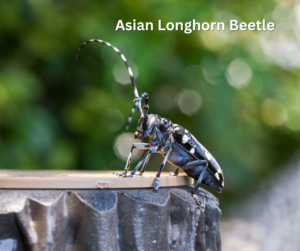Tree Check Declared for August by USDA APHIS
go.ncsu.edu/readext?1017043
en Español / em Português
El inglés es el idioma de control de esta página. En la medida en que haya algún conflicto entre la traducción al inglés y la traducción, el inglés prevalece.
Al hacer clic en el enlace de traducción se activa un servicio de traducción gratuito para convertir la página al español. Al igual que con cualquier traducción por Internet, la conversión no es sensible al contexto y puede que no traduzca el texto en su significado original. NC State Extension no garantiza la exactitud del texto traducido. Por favor, tenga en cuenta que algunas aplicaciones y/o servicios pueden no funcionar como se espera cuando se traducen.
Português
Inglês é o idioma de controle desta página. Na medida que haja algum conflito entre o texto original em Inglês e a tradução, o Inglês prevalece.
Ao clicar no link de tradução, um serviço gratuito de tradução será ativado para converter a página para o Português. Como em qualquer tradução pela internet, a conversão não é sensivel ao contexto e pode não ocorrer a tradução para o significado orginal. O serviço de Extensão da Carolina do Norte (NC State Extension) não garante a exatidão do texto traduzido. Por favor, observe que algumas funções ou serviços podem não funcionar como esperado após a tradução.
English
English is the controlling language of this page. To the extent there is any conflict between the English text and the translation, English controls.
Clicking on the translation link activates a free translation service to convert the page to Spanish. As with any Internet translation, the conversion is not context-sensitive and may not translate the text to its original meaning. NC State Extension does not guarantee the accuracy of the translated text. Please note that some applications and/or services may not function as expected when translated.
Collapse ▲The U.S. Department of Agriculture’s Animal and Plant Health Inspection Service (APHIS) is asking people to check their trees during the month of August for signs of non-native invasive pests that kill our trees. The main pest they are concerned about is the Asian Longhorn Beetle (ALB) that is between 1 and 1 ½ inches in length. This beetle has a shiny black body with white spots, a banded black and white antenna that is longer than its body, and feet (tarsus) that may appear to be bluish in color.

Asian Longhorn Beetle
The ALB feeds on 12 types of hardwood trees. Maple is a favorite, but it will also attack birch, buckeye, elm, and willow. Sometimes it can be found on ash, golden rain tree, katsura, London plane tree, mimosa, mountain ash, and poplar trees. The adult, which emerges in August, feeds on the leaves and sometimes the bark of the tree, then mates and lays eggs on the bark of the tree.
When the eggs hatch the larva burrows into the wood of the tree where it feeds until the following year when it pupates and the adult beetle chews its way out of the tree leaving a ¾-inch round exit hole. That exit hole is about the size of a dime or a penny so it should be easy to spot. The feeding of the larva on the wood of the tree weakens the tree or the branches which can lead to falling branches or trees blowing over during a storm. Lastly, the infestation possibly leading to the death of the branch or the tree.
The insect hasn’t been found in our area yet, but it has been found in other port cities. It is believed to have hitched a ride on cargo ships either in wood pallets or wood packing material. Since Morehead City is also a port city and we do receive items in either on pallets or with wood packing material it is valid to heed this tree check. Take time to your part, as this seems to be a favorite way for insects to sneak into the country.
If you see this insect or signs of the insect, call the ALB hotline at 1-866-702-9938.




